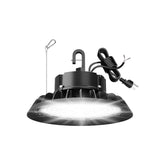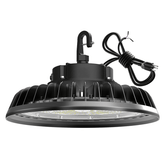Is the power quality of LED lights important?
Have you ever experienced performance issues with LED lights, even after purchasing high-quality LED lights? It can be frustrating to deal with flickers, dimming, or sudden shutdowns, especially if you don't know why it's happening. Well, while the quality of the LED light itself plays an important role in its performance, there's another key factor to consider: power quality.
Understanding the power quality of LED lights
Power quality refers to the power characteristics that affect the function of electrical equipment. It includes the following factors:
- Voltage stability
- Harmonic distortion
- Frequency change
- Transient interference
When power quality is impaired, it can have a direct impact on the performance of devices such as LED lights. Read on to better understand why power quality affects LED lights, explore how power quality issues manifest themselves in a variety of ways, and get tips for addressing these issues - as well as some suggestions for ensuring the best setup. Power quality is a key aspect of electrical systems, which directly affects the performance of devices such as LED lights. Good power quality ensures the smooth operation of the equipment, while poor power quality will lead to operation problems, or even no operation. Overload circuit When multiple electronic devices are used at the same time or when the circuit is overloaded, it can cause voltage fluctuations and harmonic distortion. These power disturbances can adversely affect the performance of LED lights, causing flickering, dimming, and even premature failure.
In the LED bulb itself, there are several factors that help maintain good power quality:
- The quality of the LED emitter affects the consistency of the light output over time.
- The presence of an effective current-limiting ic (integrated circuit) helps regulate the current flow through the led, ensuring stable performance and reducing the risk of damage.
- Proper thermal management mechanisms (such as efficient radiators and proper ventilation) help maintain optimal operating conditions for leds.
Understanding the impact of power quality on LED performance can help effectively troubleshoot problems and take proactive measures to improve the electrical system. To better understand, let's consider some examples:
- Stroboscopic: Power supply problems can cause LED lights to stroboscopic or flash. This not only affects visual comfort (which can trigger headaches or eye strain), but also reduces energy efficiency.
- Dimming: When LED lights suddenly dim or fail to reach their maximum brightness level, this is especially problematic in industrial Spaces, which require stable lighting for safety and productivity.
- Sudden power outages: LED lights suddenly turning off and then back on can be very disruptive and inconvenient, especially in critical applications such as hospitals and manufacturing facilities.
- Premature failure: Poor power quality will accelerate the degradation of LED components, resulting in premature failure. This leads to an increase in maintenance costs and a decrease in the overall reliability of the lighting system.








